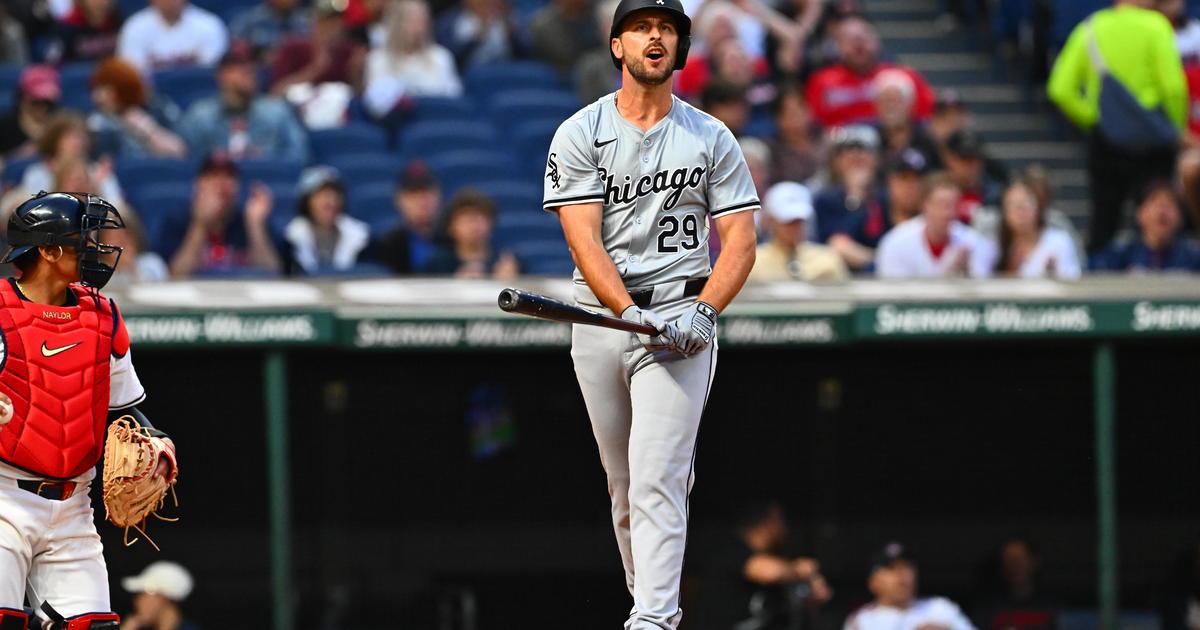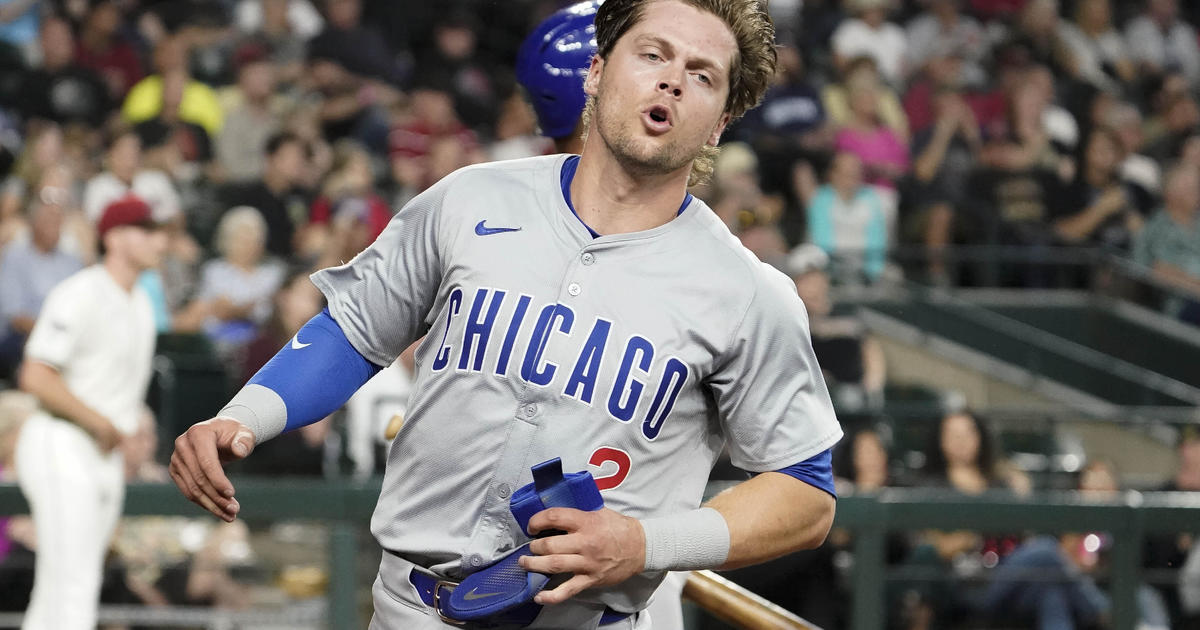Wisch: Behold, The History Of Chicago Baseball Attendance
By Dave Wischnowsky –
(CBS) In Chicago, another baseball season is in the books.
And so are the attendance figures.
Down on the South Side – not unlike Bigfoot, the Loch Ness Monster and Area 51 – U.S. Cellular Field continues to be a mystery as the ballpark once again this season served as the Bermuda Triangle of Major League Baseball, a place where good White Sox teams enter only to watch their fans disappear.
Conversely, on the flip side of town, the Cubs seemingly can pack Wrigley Field during a Depression (they did, in fact, more than doubling the White Sox's attendance during the 1930s). Or during depression as more than 91 million fans have bought Cubs tickets since the team's infamous flop of 1969. That's about 20 million more than the Sox.
In terms of attendance, 2012 was the weakest in ages for both of Chicago's hardball teams. The Sox, despite spending most of the season in first place and offering discounted tickets, drew less than 2 million fans (1,965,955) for the first time since 1995. The Cubs, meanwhile, drew fewer than 3 million (2,882,756) to Wrigley Field for the first time since 2003.
Nevertheless, despite logging 101 losses, Theo Epstein's crew still outdrew Kenny Williams' club by more than 900,000 fans this summer.
In the Windy City, the attendance disparity between baseball teams has been a burning topic of discussion for as long as I can recall. And from the economy to demography to apathy, the list of fans' explanations (or excuses) for it seems to be even longer.
I don't know, however, that any explanation really tells the full story about why the Cubs draw, while the White Sox don't. The truth is murky at best, inscrutable at worst.
Two years ago, though, in an attempt to at least shed some light on when – if not exactly how – the Cubs became baseball's Big Dog in Chicago and relegated the Sox to Second Fiddle, I conducted research for my Wisch List newspaper column by crunching decades of historical attendance figures.
I've now refreshed my findings. Beginning with 1920, the dawn of the first full decade in which both Wrigley Field and Comiskey Park were in use, I compared crowd numbers for nine full decades up through 2009.
And what I found is interesting. Because, the Cubs were not always dominant, you know. No, once upon a time, the White Sox held the Windy City in the palm of their glove.
But then it all changed, before it changed again. And again. And here's that story …
When Chicago put its Sox on
From the 1920s to the '40s – a stretch in which the Cubs made five World Series appearances, and the Sox none – it's true that, just like today, Chicago's baseball fan base heavily favored the North Side.
During the Roaring '20s, 56.6 percent of the 14.4 million total fans that attended baseball games in Chicago did so at Wrigley. In the '30s, that number rose to a whopping 68.1 percent.
During the 1940s, however, the White Sox gained ground, capturing 44.1 percent of the city's 16 million total fans. And then, beginning in 1951, when the Sox outdrew the Cubs 1,704,984 to 894,415, Pale Hose Fever took the city by storm – and reigned for 17 consecutive seasons.
During the 1950s, the Cubs posted zero winning seasons, and the Sox attracted 56.5 percent of the city's 20 million total fans. Then, using the "Go-Go" mojo from their 1959 World Series appearance, the Sox rolled in to the '60s with eight straight winning seasons (1960-67) and enjoyed 55.2 percent of the city's 19.6 million total attendance for the decade.
Cubdom comes back
In 1968, however, the city's passions again began to tilt northward.
That season, the Cubs outdrew the Sox at the gate 1,043,409 to 803,775 – their first such victory since '50. Then, during 1969, the Cubs reeled in nearly three times as many fans (1,674,993 to 589,546) and turned the table for the 1970s, attracting the exact 55.2 percent of the city's 24.7 million total fans that the Sox enjoyed a decade before.
When 1980 arrived, however, the Cubs (1,206,776) and White Sox (1,200,365) actually stood neck and neck in fandom, before the Sox once again took control. From 1981 through 1984, the South Side outdrew the North each year, including by a 650,000-fan advantage during the Sox's AL West-championship season of '83.
In 1985, however – the year after the Cubs came within one win of reaching the World Series – the North Siders outdrew the Sox 2,161,534 to 1,669,888, and then proceeded to do the same for the next six seasons.
By 1989, the Cubs were more than doubling the Sox's attendance (2,491,942 to 1,045,651). But then New Comiskey replaced Old in 1991, enabling the Sox to outdraw the Cubs for two straight seasons. Since 1993, however, the Cubs have been undisputed King, topping the White Sox in attendance for what's now been 20 straight seasons through 2012.
But, here's what's interesting.
2000s sock it to 'em
In every decade since 1970, the Cubs have drawn a higher percentage of Chicago's total fans. However, you might be surprised to learn that during the 1980s and '90s the White Sox actually gained ground.
For the '70s, the Sox drew 44.8 percent of the city's total fans, followed by 45.6 percent in the '80s and 46.3 percent in the '90s.
But then came 2000-09, a decade in which the White Sox won a World Series, yet somehow lost 4.3 percent of the city's fan base, as the Cubs attracted 58 percent of the city's 52.3 million total fans, compared to 53.7 percent in the 10 years before.
Chicago fans fading away
Since 2010, a total of 15,125,145 fans have attended baseball games in the Windy City, with the Cubs attracting 59.3 percent of them and again extend their lead on the Sox three years into this decade.
However, perhaps most significantly of all is that overall baseball attendance in Chicago has fallen from 5,257,351 in 2010 to 4,848,711 this season – a precipitous drop of more than 408,000 fans in just three years.
If that trend keeps up – and here's to hoping it does not – a day could come when we're not just talking about where all the White Sox fans are, but instead are wondering what happened to Chicago's baseball fans.
All of them.
If nothing else, Dave Wischnowsky is an Illinois boy. Raised in Bourbonnais, educated at the University of Illinois and bred on sports in the Land of Lincoln, he now resides on Chicago's North Side, just blocks from Wrigley Field. Formerly a reporter and blogger for the Chicago Tribune, Dave currently writes a syndicated column, The Wisch List, which you can check out via his blog at http://www.wischlist.com. Follow him on Twitter @wischlist and read more of his CBS Chicago blog entries here.




